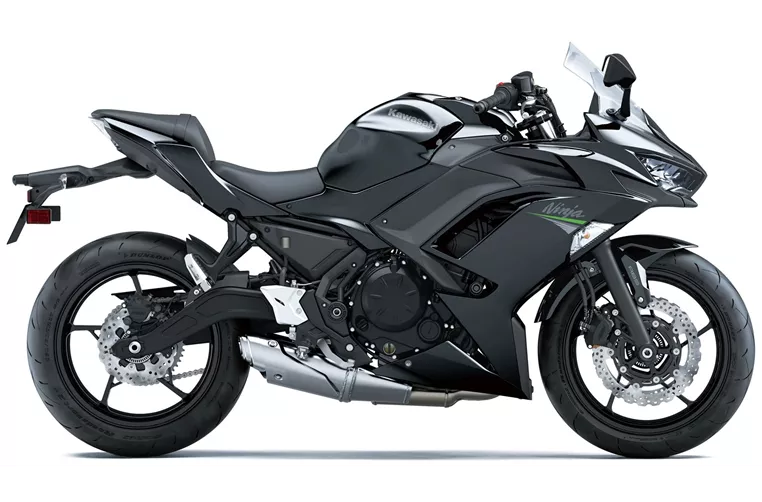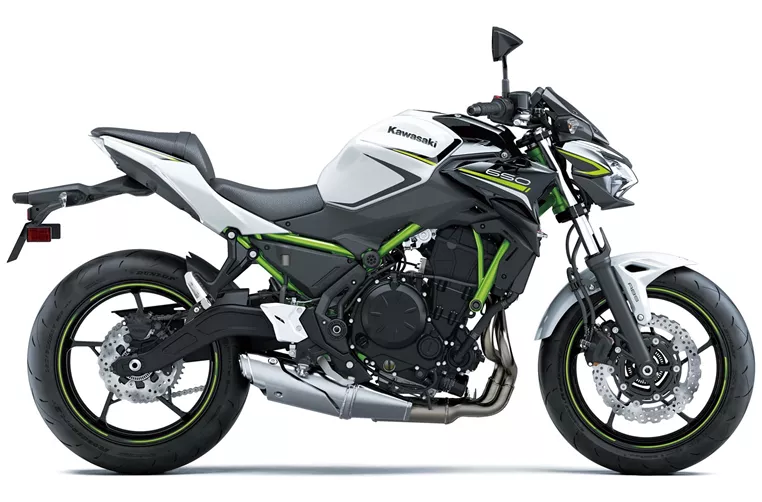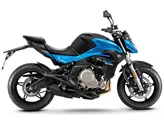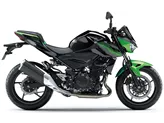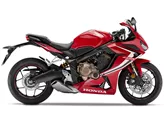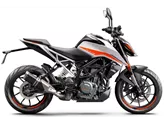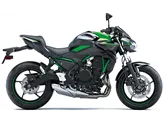Kawasaki Ninja 650 2020 vs. Kawasaki Z650 2020
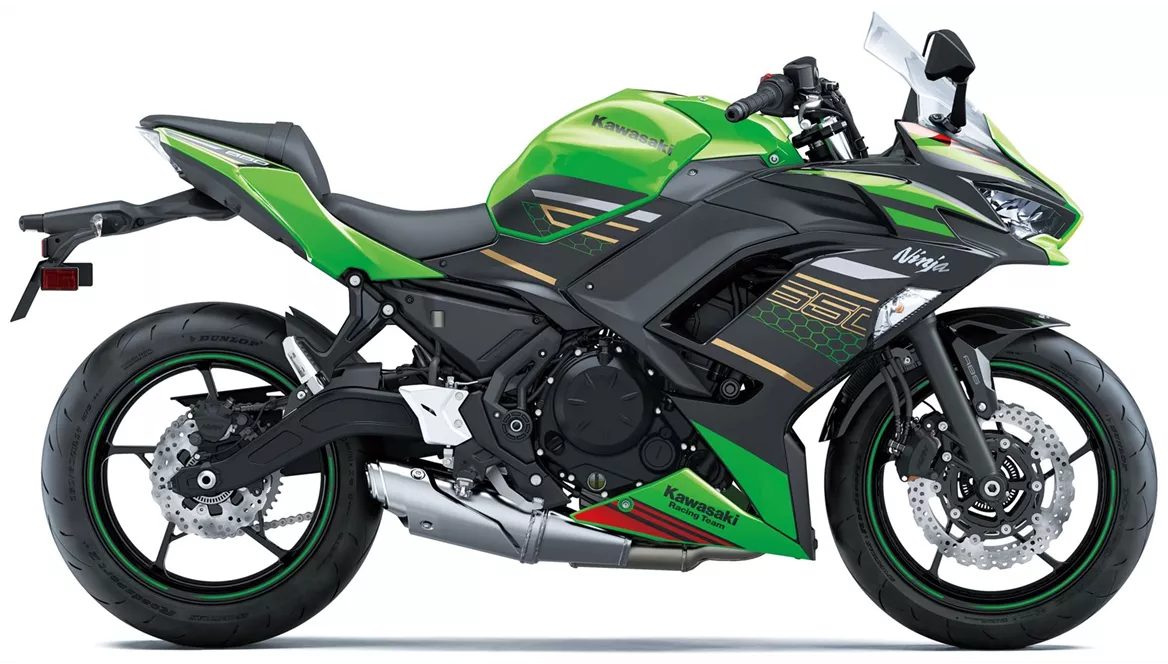
Kawasaki Ninja 650 2020
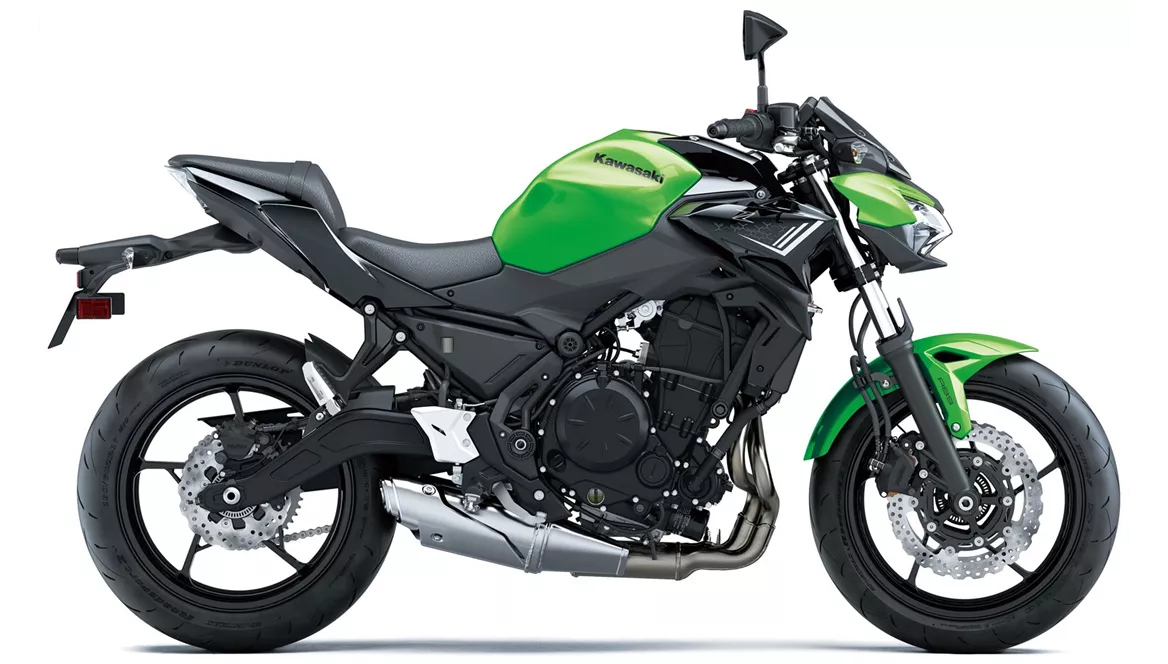
Kawasaki Z650 2020
Overview - Kawasaki Ninja 650 2020 vs Kawasaki Z650 2020
The Kawasaki Ninja 650 2020 and the Kawasaki Z650 2020 are both popular models from Kawasaki, each with their own unique features and strengths.
Starting with the technical specifications, both bikes have the same engine type, bore, stroke, engine power, torque, compression ratio, fuel system, throttle bore, cylinders, valves per cylinder, valves, cooling, and displacement. This means that they have identical engine performance and characteristics.
In terms of suspension, both bikes have a telescopic fork front suspension with a diameter of 41mm and a swing arm rear suspension with a monoshock absorber. They also have the same suspension adjustment, which is preload.
The chassis of both bikes is made of steel and has a tubular frame type. They also have the same rake and trail measurements, which are 65.5 degrees and 100mm respectively.
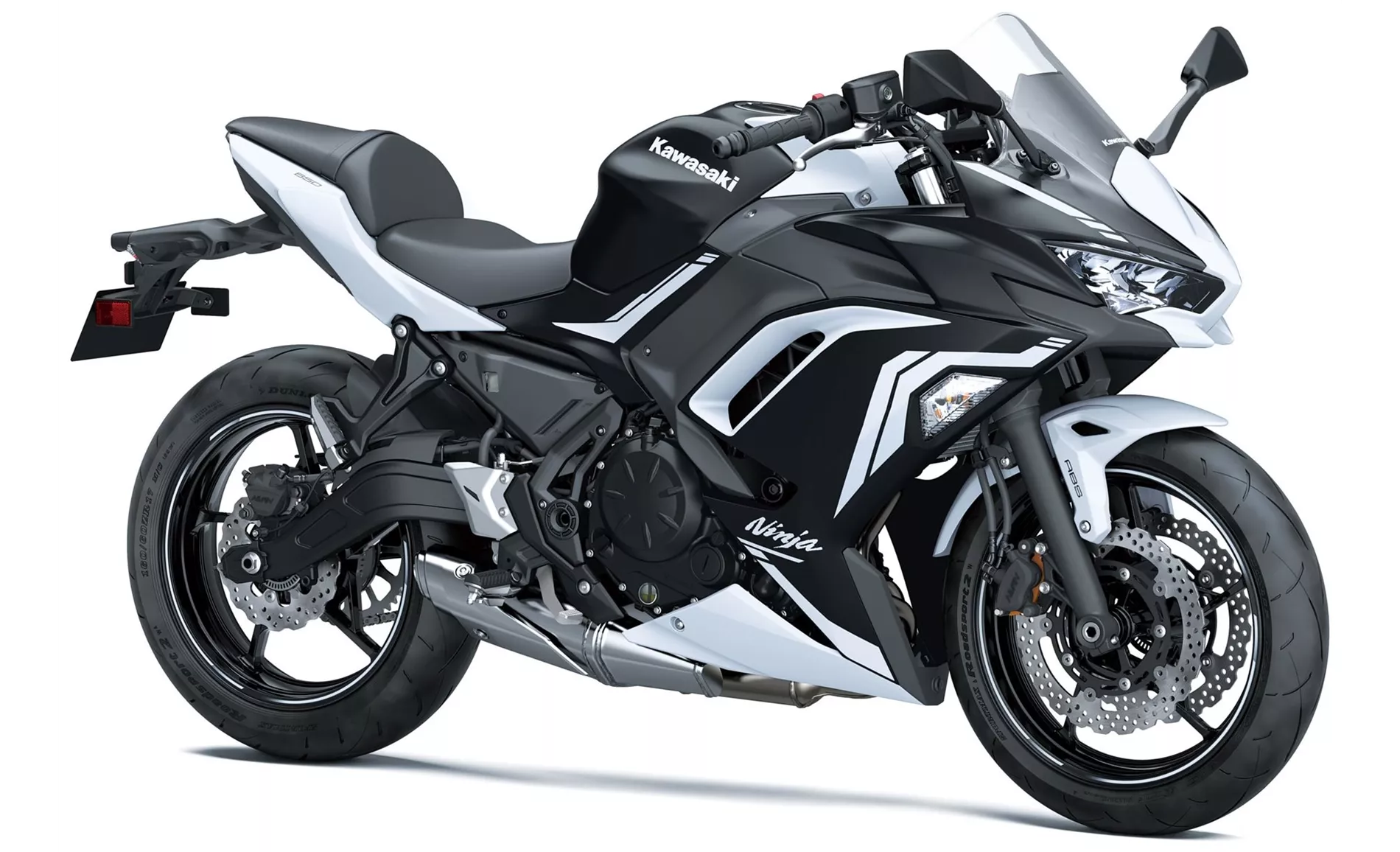
Kawasaki Ninja 650 2020
For the brakes, both bikes have double disk front brakes with a diameter of 300mm and double piston technology. They also have the same advanced rider assistance system, which is ABS.
In terms of dimensions and weights, both bikes have the same front and rear tire width and diameter, wheelbase, seat height, and fuel tank capacity. However, the Kawasaki Z650 2020 has a slightly lower kerb weight with ABS compared to the Kawasaki Ninja 650 2020.
In terms of equipment, both bikes have LED daytime running lights, LED headlights, and a TFT display.
Now let's discuss the strengths and weaknesses of each bike.
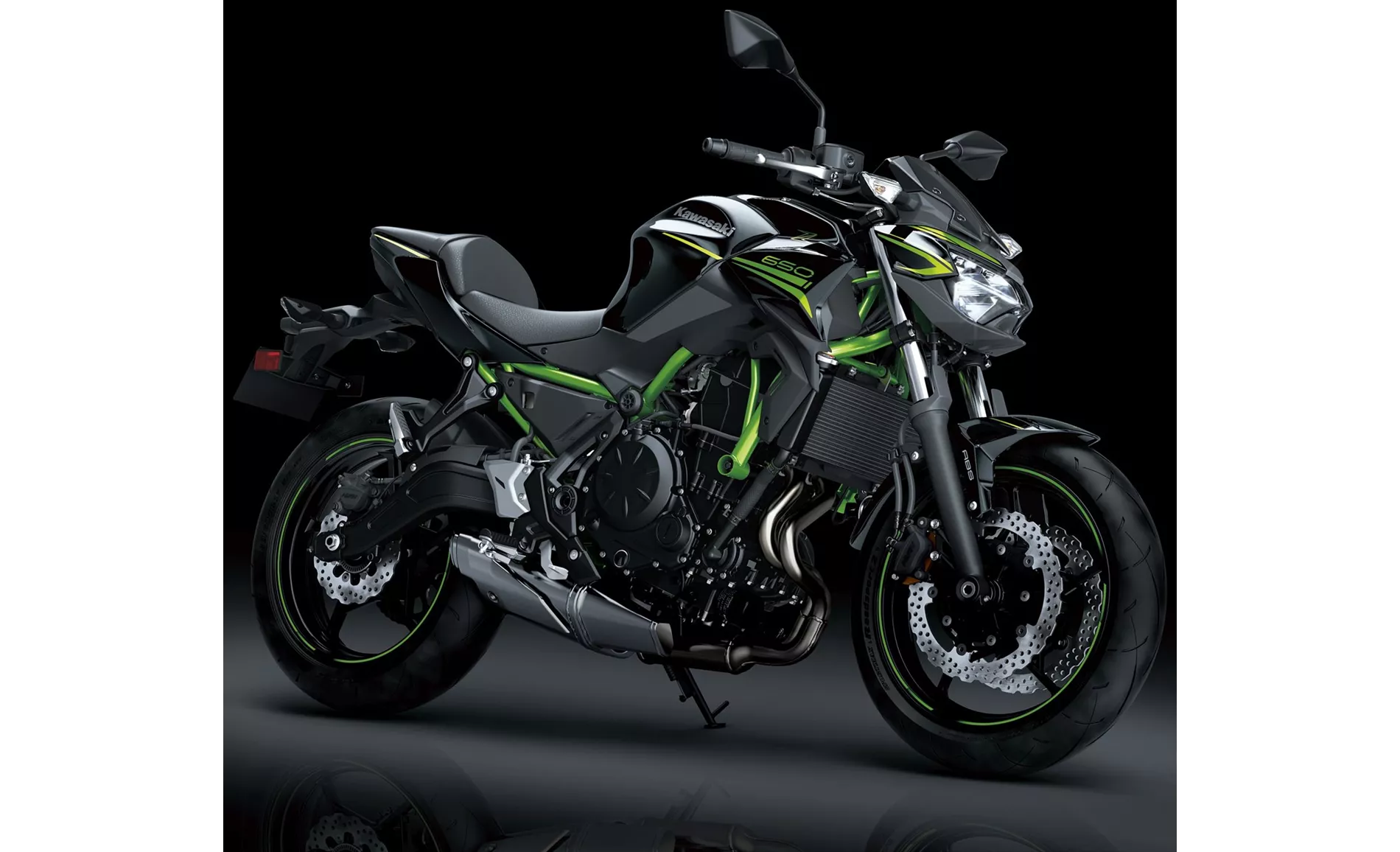
Kawasaki Z650 2020
The Kawasaki Ninja 650 2020 has the advantage of being one of the last supersport models of its kind, making it a popular choice among sportbike enthusiasts. It has a powerful two-cylinder engine that delivers impressive performance. The comfortable seat is suitable for touring, and the compact dimensions make it easy to maneuver in traffic. The beginner-friendly seat height is ideal for riders who are new to motorcycles. The stable chassis provides a smooth and controlled ride. The TFT display with connectivity adds a modern touch to the bike, and the sporty look is sure to turn heads.
On the other hand, the Kawasaki Z650 2020 also has a powerful two-cylinder engine, but it is known for its aggressive intake noise, which adds to the overall riding experience. The compact dimensions and low seat height make it easy to handle, especially for shorter riders. The stable chassis ensures a confident ride, and the TFT display with connectivity adds convenience. The grown-up look of the bike gives it a mature and sophisticated appeal.
However, both bikes have some weaknesses. The front brake pressure point is a common complaint for both models, which can affect the braking performance. The Kawasaki Ninja 650 2020 may not be suitable for tall riders due to its overall dainty size. It also has limited suitability for touring with two people. On the other hand, the Kawasaki Z650 2020 may be uncomfortable for tall riders due to its compact dimensions. Additionally, the Rideology App, which is a connectivity feature, may not be 100% sophisticated.
In conclusion, both the Kawasaki Ninja 650 2020 and the Kawasaki Z650 2020 are powerful and capable bikes with their own unique strengths and weaknesses. The choice between the two ultimately depends on the rider's preferences and priorities.
Technical Specifications Kawasaki Ninja 650 2020 compared to Kawasaki Z650 2020
Pros and Cons in comparison
Pros and Cons in comparison
Kawasaki Ninja 650 2020
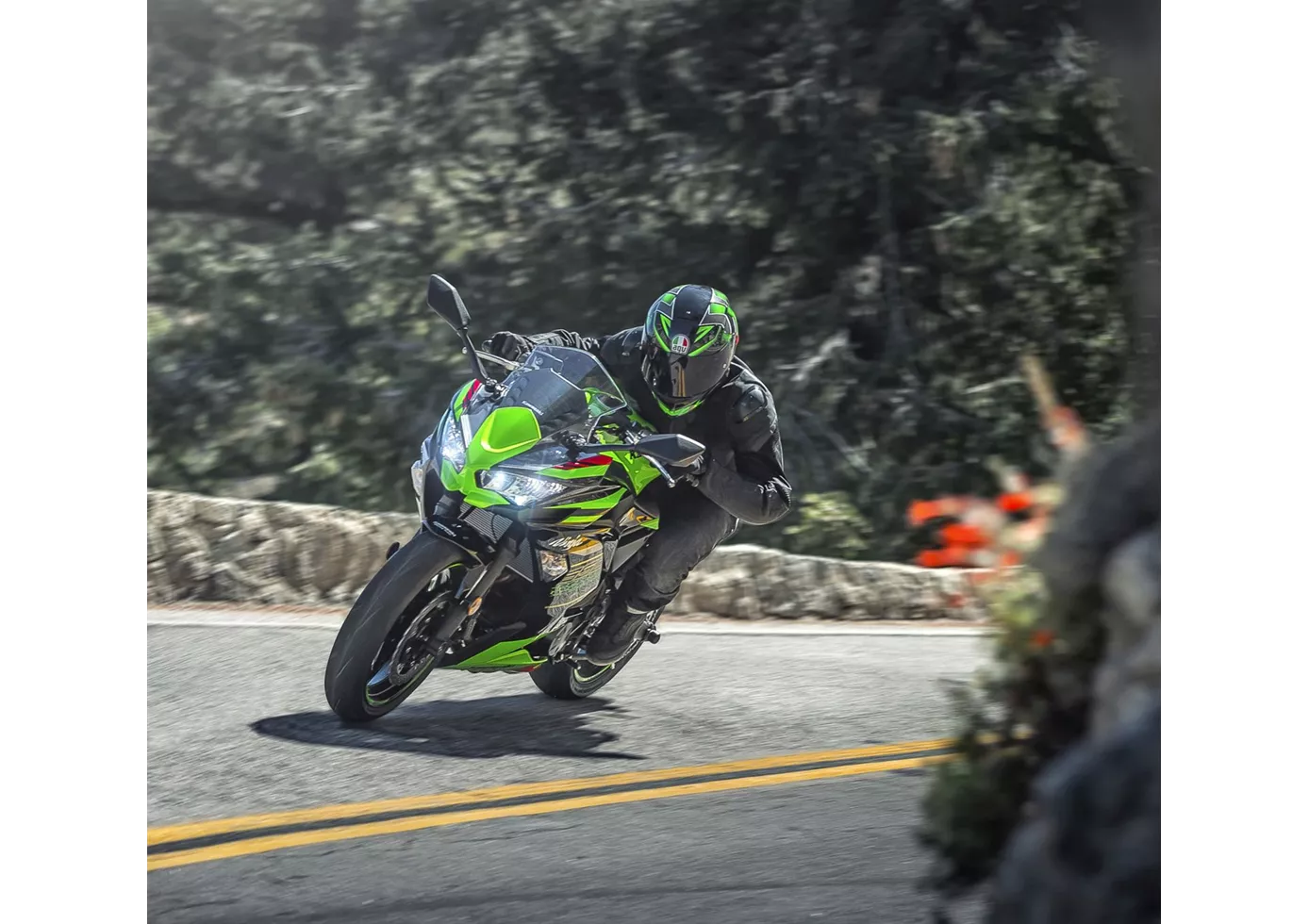
Save the sport tourer! With the Ninja 650, Kawasaki has created an exemplary representative of this class and (hopefully) solved the problem of the new generation. The stable chassis and the decent two-cylinder will delight beginners and advanced riders alike, even at a brisker pace. The front brake is a little too well intentioned, lacking a transparent pressure point despite basically good braking performance. Another plus is the TFT display, which we don't find in the competition at the moment, as well as the grown-up look, which is strongly oriented towards the larger Ninja models.
Kawasaki Z650 2020
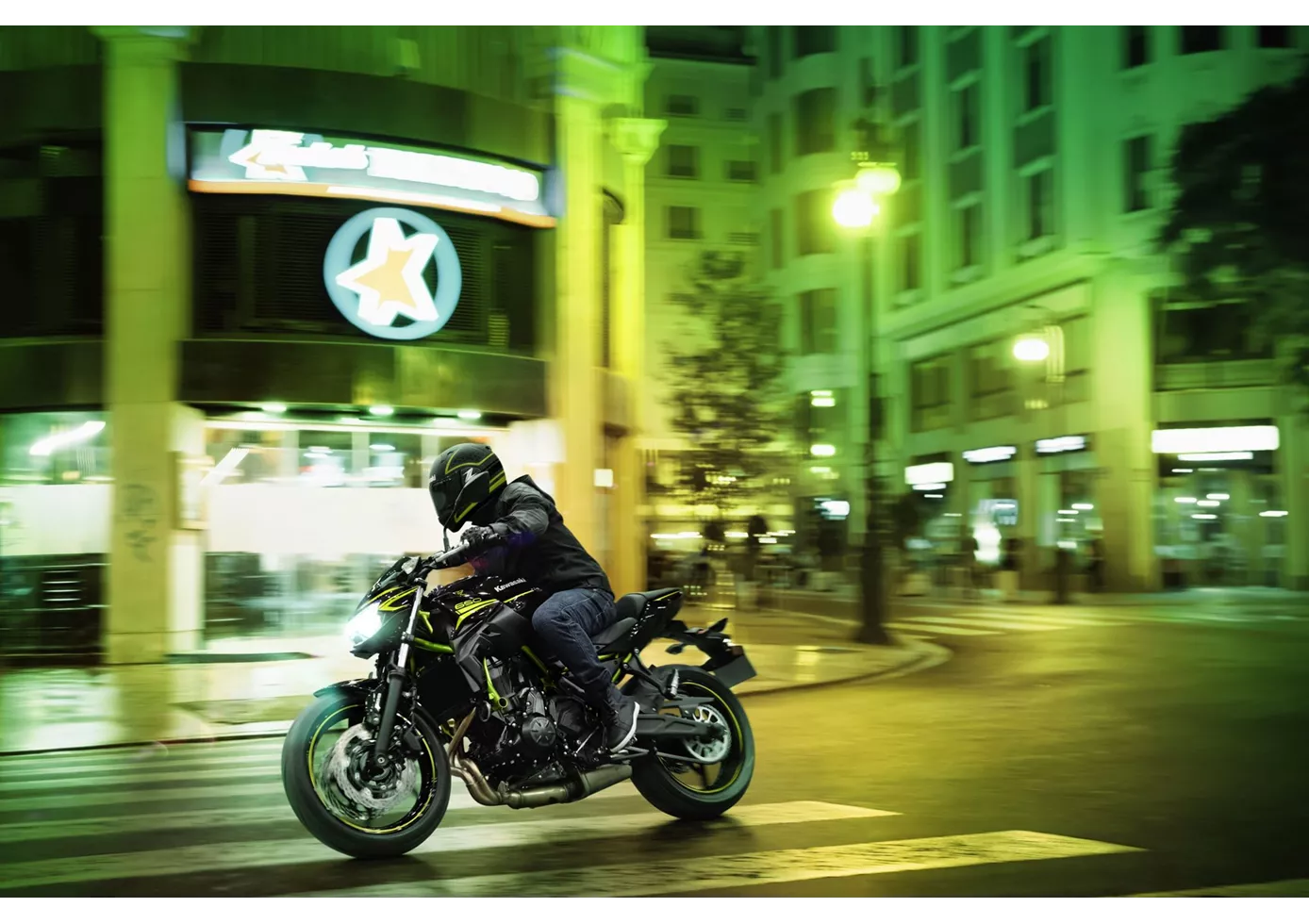
It's simply marvellous what Kawasaki has put together in a complete package with the new Z650. The technical components may not knock your socks off individually, but in combination they make for a pleasantly neutral motorbike that everyone will enjoy. No bitchy idiosyncrasies - simply a naked bike that works really well on winding country roads. Of course, the TFT display, which we don't find in the competition at the moment, is a plus, as is the grown-up look, which is strongly oriented towards the larger Z models. Only the pressure point of the front brake could have been more clearly defined - but you can't have everything in this price range.
Price Comparison Avarage Market Price Kawasaki Ninja 650 vs Kawasaki Z650
There are a few key differences between a Kawasaki Ninja 650 2020 and a Kawasaki Z650 2020. In terms of price, the actual average price of a Kawasaki Ninja 650 2020 is about 10% higher. Compared to Kawasaki Z650 2020 there are less Kawasaki Ninja 650 2020 bikes available on the 1000PS.de Marketplace, specifically 10 compared to 21. It takes less time to sell a Kawasaki Ninja 650 with 75 days compared to 80 days for a Kawasaki Z650. Since model year 2017 1000PS.de editors have written 20 reviews for the Kawasaki Ninja 650 and 31 reviews for the Kawasaki Z650 since model year 2017. The first review for the Kawasaki Ninja 650 was published on 04/10/2016 and now has more than 79,600 views. This compares to more than 25,000 views for the first review on Kawasaki Z650 published on 08/11/2016.
